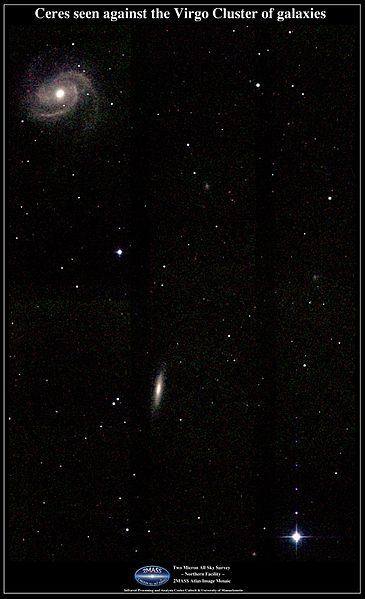Archivo:Ceres seen against the Virgo cluster of galaxies (2MASS).jpg
Apariencia

Tamaño de esta previsualización: 365 × 599 píxeles. Otras resoluciones: 146 × 240 píxeles · 292 × 480 píxeles · 467 × 768 píxeles · 1264 × 2076 píxeles.
Ver la imagen en su resolución original (1264 × 2076 píxeles; tamaño de archivo: 1,59 MB; tipo MIME: image/jpeg)
Historial del archivo
Haz clic sobre una fecha y hora para ver el archivo tal como apareció en ese momento.
| Fecha y hora | Miniatura | Dimensiones | Usuario | Comentario | |
|---|---|---|---|---|---|
| actual | 19:02 14 sep 2009 |  | 1264 × 2076 (1,59 MB) | Karshan | {{Information |Description= Atlas Image mosaic of the largest asteroid in the Solar System, 1 Ceres, seen against the Virgo Cluster of galaxies on 2000 Apr 6 UT during routine operations of the northern 2MASS facility on Mt. Hopkins, AZ. The asteroid is s |
Usos del archivo
No hay páginas que enlacen a este archivo.
Uso global del archivo
Las wikis siguientes utilizan este archivo:
- Uso en it.wikipedia.org
